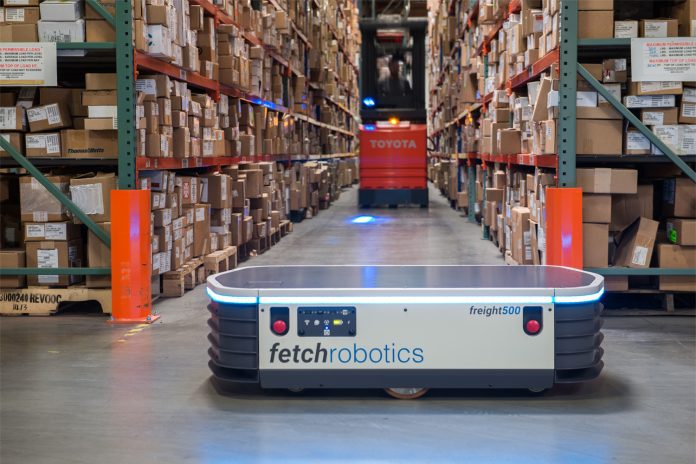Honeywell and Fetch Robotics partner on warehouse operations
For landlords and owners of warehouse distribution centers, designing for growth means adopting innovative technologies that can meet the tremendous demands from e-commerce tenants. Today many warehouse owners are turning to robotics to keep pace with the tremendous growth in online sales and the increasing shortage of labor supply.
Now, Honeywell a leader in building control technologies, is collaborating with Fetch Robotics to develop autonomous mobile robots to assist warehouse owners and tenants in fulfilling the increasing volume of e-commerce orders.
Fetch Robotics is expected to add “mobility capability? to Honeywell Intelligrate’s existing work with Carnegie Mellon University focused on developing AI and robotics technologies, and will enable its customer-base of more than 50% of the top 100 global e-commerce retailers to increase productivity and efficiency while reducing labor costs.
“As staffing challenges and the continued growth of online shopping are pressuring supply chains, robotics can be an effective solution to help make large, integrated distribution centers more efficient,” said Pieter Krynauw, president of Honeywell Intelligrated. “With this arrangement, we can provide our customers with a complete suite of fixed and mobile robotics solutions, backed by the expert systems integration, solutions development and reliable, 24/7 technical support they expect from us.”
The worldwide e-commerce boom has led to an unprecedented demand for warehouse workers and created intense competition among employers for more associates. ?Warehouse associates were among the top nine positions with the fastest wage growth, as the median wage rose by 6.7% in 2017 according to data collected by Glassdoor.
A 200,000-square-foot warehouse fulfillment center requires an average of 200 associates on the floor when you add to this to labor shortages in highly concentrated local areas and the lack of appeal of manual labor jobs – demand for workers in local markets is resulting in massive increases in labor costs to owners and operators of distribution centers.
Further exasperating the problem is the consistent growth in the number of distribution centers?which is expected increase at a compound annual rate (CAGR) of approximately 6% over the next five years.
These pressures have led industrial property owners and landlords to find ways to automate parts of their operations.
Fetch Robotics, which has led in the developed autonomous mobile robots (AMRs) that use LiDAR and 3D cameras ? similar to self-driving car technology ? to navigate unpredictable warehouse environments safely and accurately, will now use its expertise to create an automated warehousing solution with Honeywell.
The robots can adjust routes in real time, unlike automated guided vehicle systems, which depend on pre-programmed, fixed paths and are designed to take on repetitive warehousing tasks that may otherwise require significant travel time between locations and transporting heavy loads.
Honeywell?s Momentum warehouse execution system will be used to provide a real-time unified platform that brings to together automation solutions, workflows, orders and labor.

